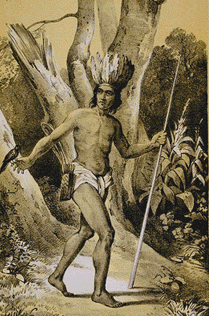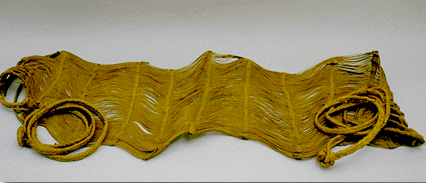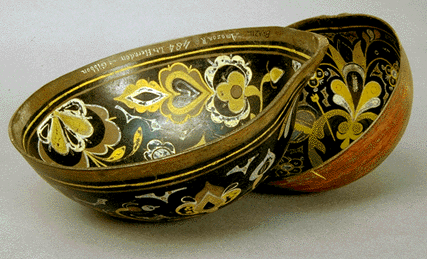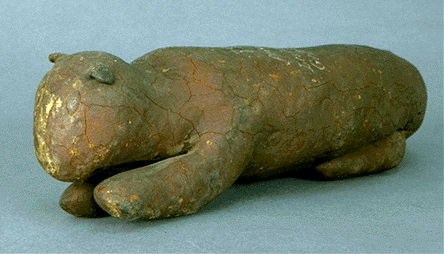Exploration of the Southern Continent
Much of the Smithsonian's early natural history collections came from Mexico, the Caribbean, and Central and South America. The fourth Annual Report (1850) discusses several Latin American expeditions, in particular the exploration of islands near Nicaragua by Ephraim G. Squier, who served as U.S. charge d'affaires in Guatemala.
Hearing reports of ancient stones (piedras antiguas) on the island of Pensacola "within cannon-shot of the old castle of Granada," Squier led an expedition there in late December, 1849. He discovered a group of large stone monuments on Pensacola and then explored other uninhabited coastal islands.
On the island of Zapatero, Squier and his Nicaraguan assistants found what his guide had called el circulo de frailes, "the monks' circle." Within the circle lay a carved stone monolith, which had rested atop a stone pedestal almost three meters high.
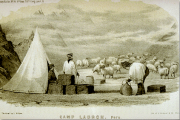
Squier was also interested in a smaller stone idol that was venerated by native people of the region. Since some Catholic friars had threatened to throw the idol into a lake, he decided to rescue it from certain destruction. Squier shipped five monumental stones to Washington in 1850 by means of a sailing vessel traveling around Cape Horn. The Smithsonian's first Secretary Joseph Henry, disturbed by the "enormous charge of $192.50" for the shipment, prevailed upon a Señor B. Blanco, the shipper, to transport it for free.
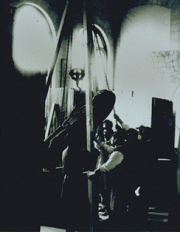 During that decade several navigators ventured along rivers of the southern continent. Lt. J. M. Gillis of the U.S. Navy assisted the Chilean government in setting up a national observatory at Santiago, and collected vertebrates and minerals there. In the isthmus of Darien, Lt. Nathaniel Michler collected natural history specimens while exploring the possibility of constructing a canal. Capt. Thomas J. Page led an expedition down the Parana River by steamer, bringing back valuable seeds and plants.
During that decade several navigators ventured along rivers of the southern continent. Lt. J. M. Gillis of the U.S. Navy assisted the Chilean government in setting up a national observatory at Santiago, and collected vertebrates and minerals there. In the isthmus of Darien, Lt. Nathaniel Michler collected natural history specimens while exploring the possibility of constructing a canal. Capt. Thomas J. Page led an expedition down the Parana River by steamer, bringing back valuable seeds and plants.
 In 1851, Lt. William Lewis Herndon was charged with exploring the Amazon and its tributaries to determine the feasibility of steam navigation, which could advance trade along the inland rivers. Herndon and Lt. Lardner Gibbon split up the expedition, with Herndon exploring the head waters and main course of the great river, and Gibbon following the Bolivian tributaries down the Madeira to the Amazon. They collected animals, birds, and ethnographic objects that represented the region's material culture. In their two-volume book, Exploration of the Valley of the Amazon, Herndon describes the manufacture of rubber shoes and of small animal figures, made by repeatedly dipping a core in liquid rubber and decorating the surface with heated metal wires. The delicately painted gourd bowls and palm fiber hammock in this exhibit were probably collected by Gibbon. Their collections were transferred to the Smithsonian in 1858.
In 1851, Lt. William Lewis Herndon was charged with exploring the Amazon and its tributaries to determine the feasibility of steam navigation, which could advance trade along the inland rivers. Herndon and Lt. Lardner Gibbon split up the expedition, with Herndon exploring the head waters and main course of the great river, and Gibbon following the Bolivian tributaries down the Madeira to the Amazon. They collected animals, birds, and ethnographic objects that represented the region's material culture. In their two-volume book, Exploration of the Valley of the Amazon, Herndon describes the manufacture of rubber shoes and of small animal figures, made by repeatedly dipping a core in liquid rubber and decorating the surface with heated metal wires. The delicately painted gourd bowls and palm fiber hammock in this exhibit were probably collected by Gibbon. Their collections were transferred to the Smithsonian in 1858.

